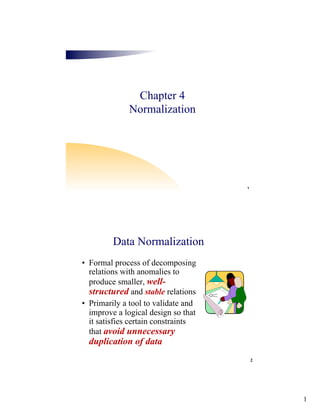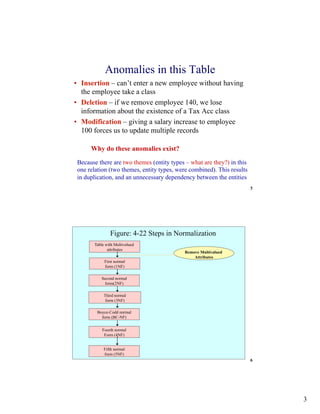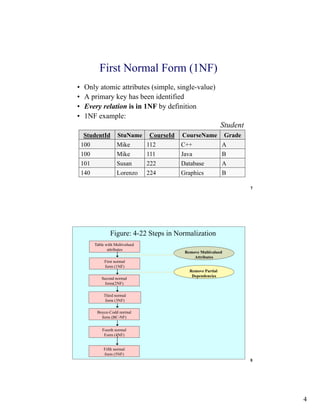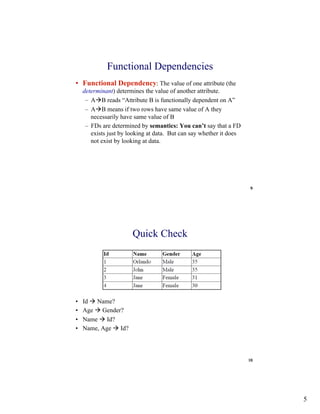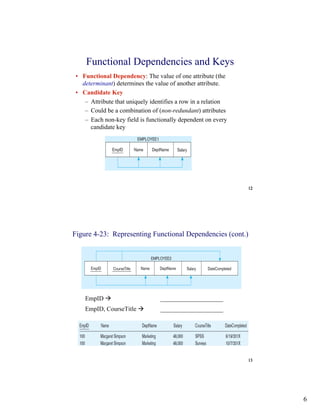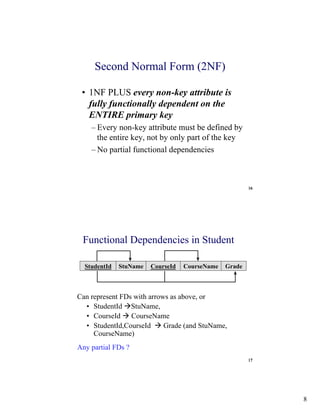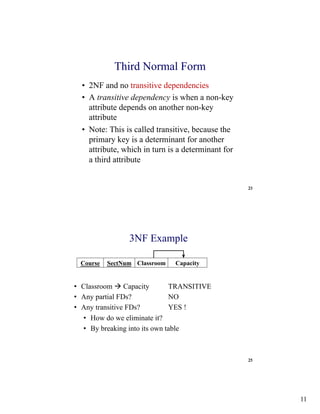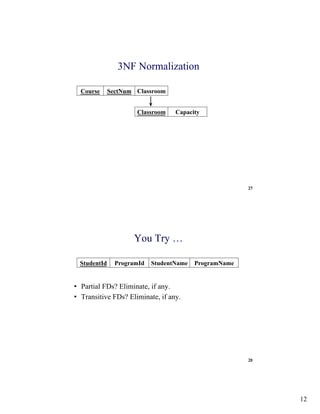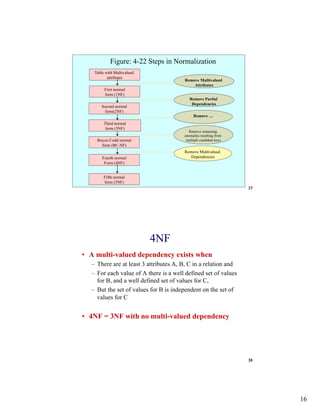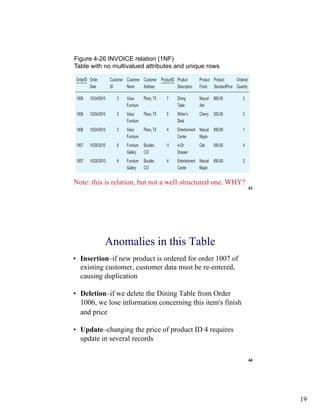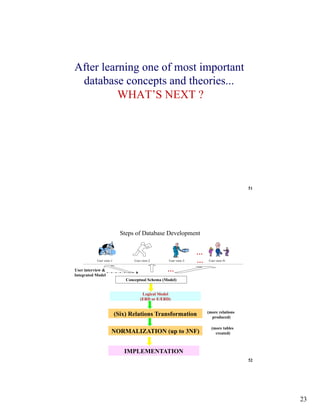The document discusses database normalization. It defines normalization as a process to decompose relations with anomalies into smaller, well-structured relations. The goals of normalization are to eliminate anomalies like insertion, deletion, and modification anomalies, and to design relations that are in first normal form (1NF), second normal form (2NF), and third normal form (3NF). It provides examples of tables with anomalies and how to normalize them into higher normal forms by removing anomalies through decomposition into multiple relations.
